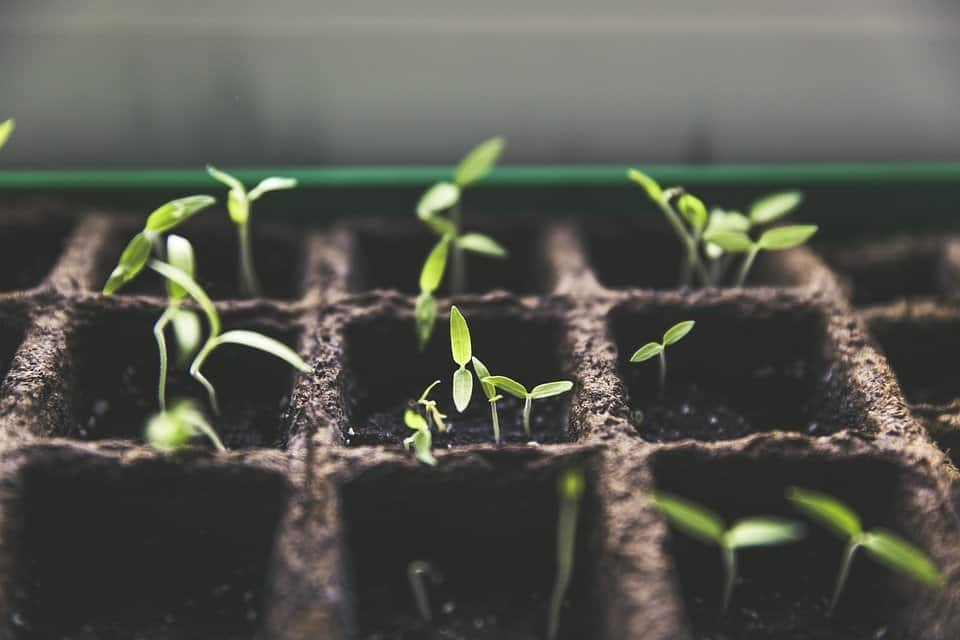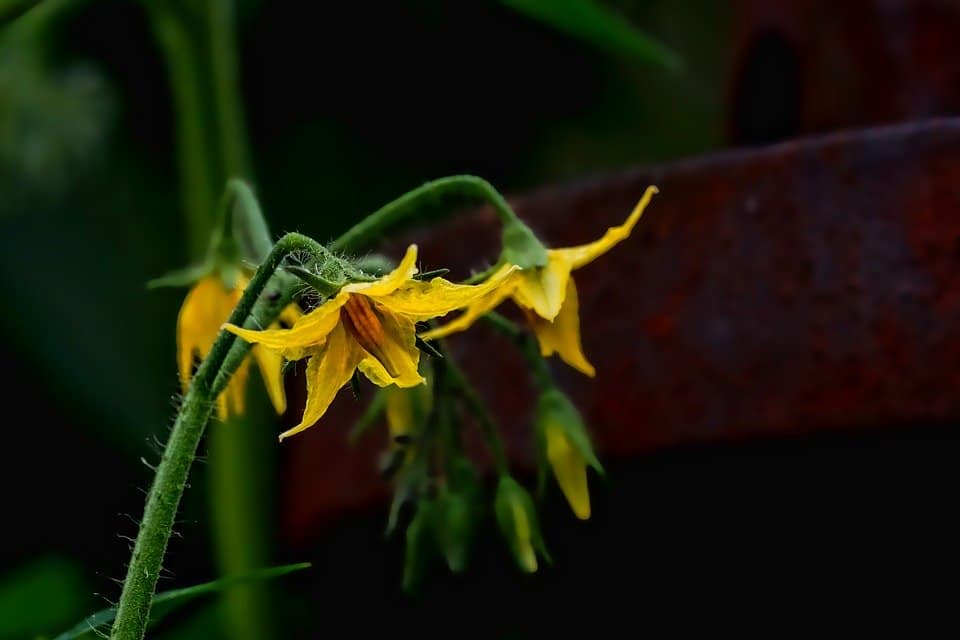Growing tomatoes at home is simple, easy and fun! Put in the due effort and before you know it, you will be enjoying juicy tomatoes in summer.

However, before you begin growing them you need to know about the two major growth habits for tomato plant varieties: cordon (indeterminate) and bush (determinate).
- Cordon (indeterminate): These tomato plants have a single long stem that is accompanied by shoots and branches around its sides. These tomato plants typically require twine or bamboo supports to grow properly without getting too congested. If you are a novice gardener, you might be most familiar with this variety of tomato plants.
Cordon varieties can grow up to 6 feet tall and require pruning. - Bush (determinate): These tomato plants grow lower, closer to the ground. They don’t have a single major stem and prefer to stretch horizontally. Bush varieties of tomato plants are best grown in pots, containers, and hanging baskets. The maximum spread of a bush tomato plant is 2 – 3 feet. You don’t have to stalk bush tomato plants.
Which tomato variety you choose to grow will decide where you can grow them, whether you need to stalk/prune them, and how much space each of them will take up. Choose wisely!

Thanks for reading and we hope you learn something you can use from this article. If you want to give back to us here at backyard-farmer.com, just click on an advert 🙂 Thanks!
Sowing tomato seeds
- If you plan to grow your tomatoes in pots, you will have to sow your seeds somewhere between February to April (8 weeks before last frost of winter). However, if you plan to grow them in a greenhouse you can sow them earlier.
- Sow your seeds in 7.5 to 10 cm pots filled with moist compost. Push the seeds at a depth of 2 cm (or 0.75 inch) into the soil. You can also use seed trays to sow your tomato seeds if you plan on growing them indoors.
- Cover your compost with a layer of vermiculite and water to give your seeds the moisture and nutrients required to germinate properly. However, you need to be careful not to over water your seeds. Excess moisture can invite fungal diseases.
- Tomato seeds need soil that is both warm and moist to be able to germinate. Most tomato seeds will begin to germinate at temperatures of 22 degrees Celsius and above.

Transplanting your tomato plants
- Most tomato seeds will begin to germinate and sprout in 7 – 14 days. Once they reach a height of 2-3 cm or the first two true leaves have emerged, you will need to transplant them into a pot that can be kept outdoors. Do this before your plants get too big to handle.
- Hold your tomato plant by the leaves, and loosen the soil around the roots. Be careful not to touch the stem. Pull out the tomato plant and gently place it into your 5 cm pot filled with rich, moist compost.
- Tomatoes get their flavor from the soil they are placed in. Loamy soil rich in humus is key to a bountiful tomato harvest. Avoid cheap composts, instead invest in peat-based compost that is loamy enough.
- After the last frost in late May, it is safe to move your plants outdoors. If you don’t have a garden or a front yard, place your tomato plants on a window sill where they can get enough sunlight.
- If you are growing multiple tomato plants at the same time, make sure that you position them with enough space in between to avoid overcrowding. Tomato plants need their fair share of sunlight. If the leaves of your tomato plants are touching each other, their stems may become ‘leggy’ and weak.

How to prune your tomato plants
- If you want your tomato plants to produce fruit as soon as possible, bear healthy ripe tomatoes, and avoid diseases and infections, then you will need to prune or ‘pinch’ them regularly.
- Pinching refers to getting rid of suckers. Suckers are the tomato plant shoots that pop up between the main stem and an adjacent plant branch. Suckers drain plant nutrients and produce inferior tomatoes, so it is best to remove them quickly.
- When your tomato plant is 4 – 6 inches tall, you can pinch it to encourage faster growth without worrying about the fruit itself because it has not yet bloomed. Pinching younger tomato plants is most effective as the suckers that emerge are still weak.
- Grab the base of a sucker between your thumb and forefinger. Once you have a firm hold of it, gently bend it towards and away from the plant, until it breaks away from the parent stem.
- If you notice a young sucker emerging, you will want to pinch it using your fingers by quickly plucking it out. Don’t use tools such as pruning knives or a pair of clippers, as these cause deep wounds which are difficult for your tomato plant to heal quickly. Such wounds are a hot spot for infection and fungal growth.
- Once the first fruit cluster of tomatoes has emerged, you can prune the sides of your tomato plant’s stem for maximum prolific growth. If your plant is mature already, you will want to only focus on decaying foliage, yellow leaves, wilting branches and dead plant debris that has fallen off.
- Be careful not to over prune your tomato plant, especially later during the year when it gets hot. It is possible for your tomato plant to yield a healthy harvest without any pruning. It is not required, but pruning still gives your plant the best shot at flourishing.

Taking care of your tomato plant
- Tomato plants need at least 14 to 18 hours of sunlight every day. If your outdoor environment does not allow this, consider buying grow lights or any other artificial plant lighting to help them grow.
- Keep removing the oldest leaves of your tomato plant as they grow. These leaves are most prone to fungal infections and soil-borne pathogenic diseases.
- Strong winds help tomato plants grow sturdy stems when they sway in the air. If you start growing your seedlings indoors, open a fan nearby for 5 – 10 minutes, twice a day to encourage stem growth.
- Tomato plants really only need adequate sunlight, water, soil nutrients and occasional maintenance. Do well at providing the basic requirements, and you will have a healthy harvest of tomatoes in summer!

Try the DIY solar food dehydrator project for an eco-friendly way to preserve your harvest.





